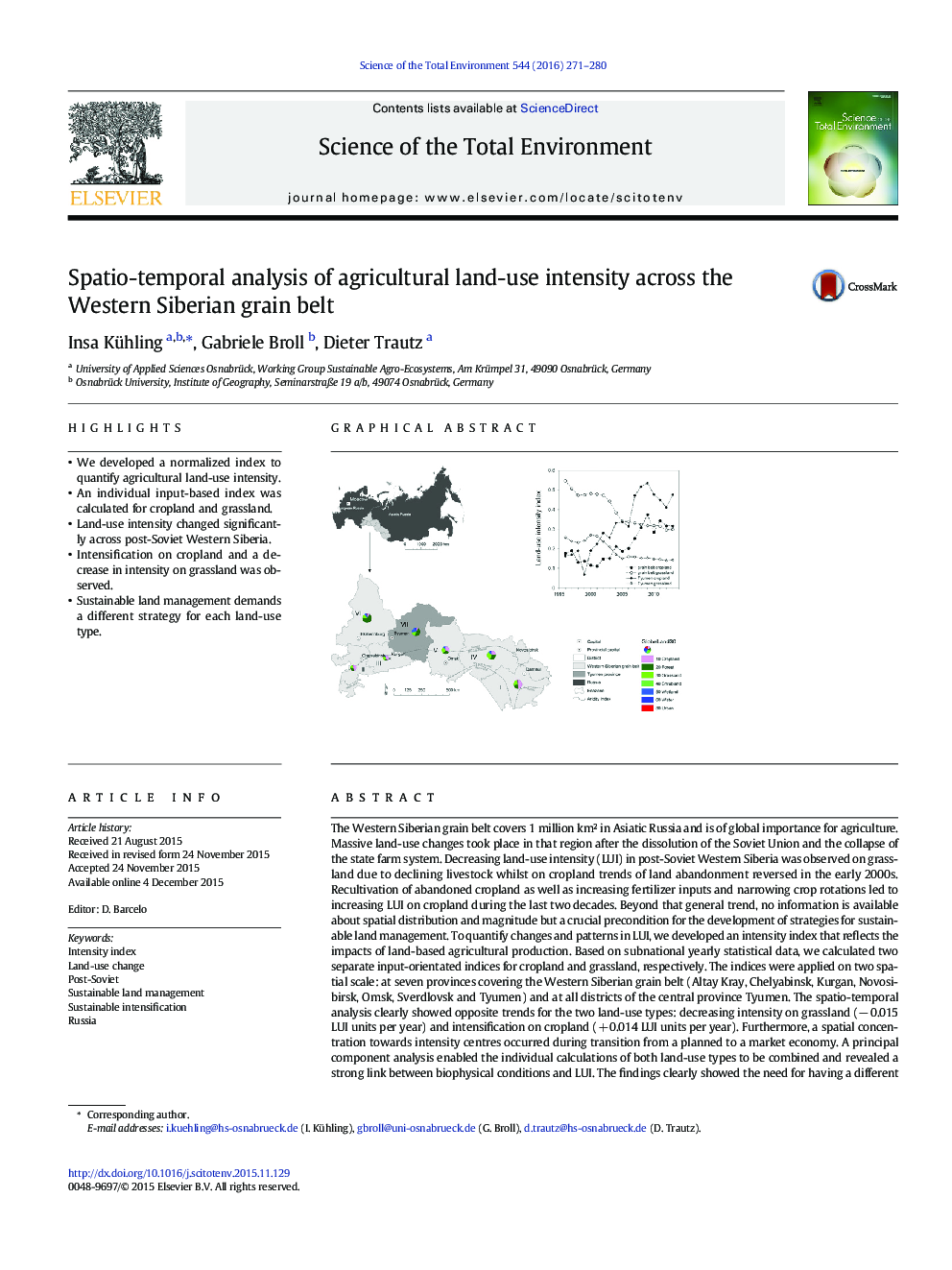| کد مقاله | کد نشریه | سال انتشار | مقاله انگلیسی | نسخه تمام متن |
|---|---|---|---|---|
| 6323591 | 1619738 | 2016 | 10 صفحه PDF | دانلود رایگان |
- We developed a normalized index to quantify agricultural land-use intensity.
- An individual input-based index was calculated for cropland and grassland.
- Land-use intensity changed significantly across post-Soviet Western Siberia.
- Intensification on cropland and a decrease in intensity on grassland was observed.
- Sustainable land management demands a different strategy for each land-use type.
The Western Siberian grain belt covers 1 million km² in Asiatic Russia and is of global importance for agriculture. Massive land-use changes took place in that region after the dissolution of the Soviet Union and the collapse of the state farm system. Decreasing land-use intensity (LUI) in post-Soviet Western Siberia was observed on grassland due to declining livestock whilst on cropland trends of land abandonment reversed in the early 2000s. Recultivation of abandoned cropland as well as increasing fertilizer inputs and narrowing crop rotations led to increasing LUI on cropland during the last two decades. Beyond that general trend, no information is available about spatial distribution and magnitude but a crucial precondition for the development of strategies for sustainable land management. To quantify changes and patterns in LUI, we developed an intensity index that reflects the impacts of land-based agricultural production. Based on subnational yearly statistical data, we calculated two separate input-orientated indices for cropland and grassland, respectively. The indices were applied on two spatial scale: at seven provinces covering the Western Siberian grain belt (Altay Kray, Chelyabinsk, Kurgan, Novosibirsk, Omsk, Sverdlovsk and Tyumen) and at all districts of the central province Tyumen. The spatio-temporal analysis clearly showed opposite trends for the two land-use types: decreasing intensity on grassland (â 0.015 LUI units per year) and intensification on cropland (+ 0.014 LUI units per year). Furthermore, a spatial concentration towards intensity centres occurred during transition from a planned to a market economy. A principal component analysis enabled the individual calculations of both land-use types to be combined and revealed a strong link between biophysical conditions and LUI. The findings clearly showed the need for having a different strategy for future sustainable land management for grassland (predominantly used by livestock of households) and cropland (predominantly managed by large agricultural enterprises), which have to be addressed specifically by the different land users. As all input data are publicly available, the approach described is readily transferable to other regions or countries of the former Soviet Union.
Journal: Science of The Total Environment - Volume 544, 15 February 2016, Pages 271-280
